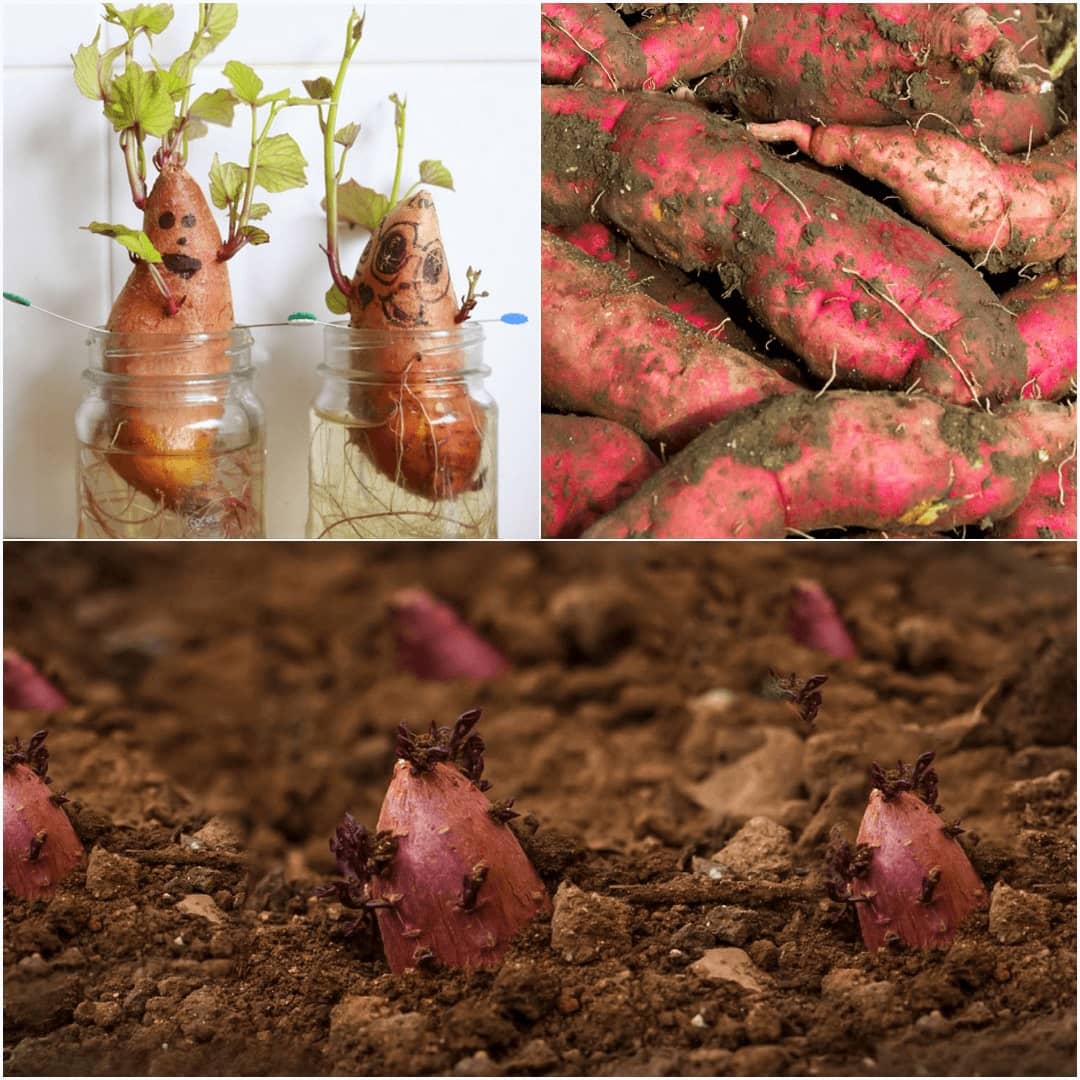Growing sweet potatoes can be one of the most rewarding experiences for any gardener. Not only do they yield delicious and nutritious tubers, but they also require minimal maintenance and are resistant to pests and diseases. In this guide, we’ll walk you through every step you need to know to grow sweet potatoes successfully, from choosing the right varieties to curing and storing them for long-term enjoyment.
Overview of Sweet Potatoes
Sweet potatoes are tropical plants belonging to the Morning Glory family. Unlike regular potatoes, sweet potatoes are tuberous roots, not true tubers. They have distinct deep-orange flesh and coppery skin, and their ability to tolerate heat and drought makes them highly adaptable to various climates. While they are typically associated with southern regions due to their need for warm weather, many varieties can thrive in northern climates when provided with appropriate growing conditions.
Climate Requirements
Sweet potatoes need at least four months of warm weather to develop fully. In cooler northern regions, they can still thrive with proper care, such as using raised beds, mulching with black plastic, and selecting early-maturing varieties.
Sweet Potato Slips: The Foundation for Success
Sweet potatoes are not grown from seeds but from slips, which are small sprouts from mature sweet potatoes. These slips can be purchased from garden centers, farmers’ markets, or ordered online. It is essential to ensure that your growing season is long enough before purchasing slips.
Growing Time
Sweet potatoes require 90 to 120 days to mature. Make sure to check your local frost dates and plan your planting accordingly to maximize your growing season.
Planting Sweet Potatoes
Site Selection
Choose a sunny spot in your garden with well-drained, sandy soil. Sweet potatoes are resilient but thrive in soil that allows for ample air space for the roots. For gardeners with clay or compacted soil, we recommend planting in raised beds to ensure optimal conditions for root growth.
Soil Preparation
To create the ideal growing environment, incorporate compost, perlite, and coconut coir into the soil. These additions will help create a fertile, loamy soil that drains well. Avoid using animal manure or fertilizers high in nitrogen, as these can lead to spindly vines and reduced tuber development.
When to Plant
Sweet potato slips should be planted 3 to 4 weeks after the last frost, or once the soil temperature has reached 65°F (18°C). Nighttime temperatures should be consistently above 55°F (13°C) to prevent damage to the tender plants.
Growing Your Own Sweet Potato Slips
If you’re up for the challenge, you can grow your own slips from organic sweet potatoes. Here’s how:
- Choose unblemished sweet potatoes about eight weeks before your last frost date.
- Place them in pots filled with at least 3 inches of light, well-draining soil.
- Maintain the soil temperature between 75°F to 80°F using heating mats if necessary.
- Water the potatoes regularly until slips emerge after 6 to 8 weeks.
Once the slips have grown to 6-12 inches, they can be carefully removed and planted outdoors, but only after being hardened off by gradually exposing them to outdoor conditions over 1 to 2 weeks.
How to Plant Sweet Potatoes
For optimal growth, plant your sweet potato slips in raised mounds about 6 to 8 inches tall and 12 inches wide. Space these mounds 3 feet apart to give the vines plenty of room to spread.
Depth and Spacing
Set the slips 4 inches deep into the soil, covering both the roots and the stems up to the leaves. Sweet potatoes develop from the nodes on the stem, so deep planting ensures that the tubers have plenty of room to grow.
Fertilizing
Immediately after planting, water your sweet potatoes with a high-phosphorus liquid fertilizer to encourage root growth. Continue watering for the next 7 to 10 days to ensure that the slips root well.
Growing Conditions for Healthy Sweet Potatoes
Fertilization
About 3 to 4 weeks after transplanting, side-dress your sweet potatoes with a 5-10-10 fertilizer to encourage steady growth. If your soil is particularly sandy, you may need to apply additional fertilizer during the growing season.
Weeding and Watering
Regular weeding is necessary to prevent competition for nutrients, but take care not to disturb the delicate feeder roots. Sweet potatoes require deep watering, especially during the mid-summer heat. Proper watering helps to increase yields and ensures healthy tubers.
Container Growing
If you’re limited on space, you can grow sweet potatoes in containers. Bush-type varieties are ideal for this, as their vines are more compact. A 10-gallon container can support two or three plants, while a 20-gallon container can accommodate four to six. Ensure the soil is rich, well-draining, and fertilized appropriately.
Choosing the Best Sweet Potato Varieties
There are several fast-growing sweet potato varieties available that are well-suited to different climates:
- ‘Beauregard’ – A 90-day variety with dark orange flesh and excellent storage qualities.
- ‘Georgia Jet’ – Fast-growing with deep orange flesh, ideal for northern growers.
- ‘Centennial’ – The most popular variety in the U.S., known for its excellent storage life.
Other varieties like ‘Jewel’, ‘Stokes’, and ‘Vardaman’ offer unique characteristics such as disease resistance, different flesh colors, and compact vines for small spaces.
Harvesting Sweet Potatoes
You can start harvesting sweet potatoes once the leaves turn yellow or after about 100 days of growth. To avoid damaging the roots, loosen the soil carefully around the plant before pulling up the vines. Handle the sweet potatoes gently, as they bruise easily.
Curing for Better Taste and Storage
After harvesting, sweet potatoes must be cured to enhance their sweetness and longevity. Place the tubers in a warm (80°F) and humid environment for 10-14 days. After curing, store them in a cool location wrapped in newspaper. Properly cured sweet potatoes can last up to six months in storage.
Pests and Diseases
Sweet potatoes are generally resilient, but they can still be affected by several pests and diseases, including:
- Flea beetles
- Fusarium wilt
- Sweet potato scurf
- Whiteflies
To protect your crops, use row covers, select disease-resistant varieties, and rotate crops regularly. Employing beneficial insects can also help keep pest populations under control.
FAQs:
Can I grow sweet potatoes from a sweet potato?
Yes, you can grow sweet potatoes from an existing sweet potato. To do this, you’ll need to create slips, which are sprouts that grow from a sweet potato. Place the sweet potato in water or soil, and after a few weeks, it will begin to sprout. Once the slips reach about 6-12 inches long, you can remove them and plant them in the garden or in containers.
How do you grow sweet potatoes for beginners?
For beginners, growing sweet potatoes starts with purchasing slips from a garden center or growing your own from a sweet potato. Plant the slips in well-drained, sandy soil in a sunny spot about 3-4 weeks after the last frost. Make sure the soil temperature is at least 65°F (18°C). Water the plants regularly and keep the area free of weeds. With proper care, you’ll have a successful sweet potato harvest.
How long does a sweet potato take to grow?
Sweet potatoes typically take between 90 to 120 days to grow, depending on the variety and growing conditions. Once the leaves begin to yellow, you’ll know the sweet potatoes are ready for harvest. It’s important to plan your planting around your local growing season to ensure enough warm days for full development.
How many sweet potatoes do you get from one plant?
On average, you can expect to harvest about 3 to 5 sweet potatoes from each plant, although this can vary based on the variety and growing conditions. Under optimal conditions, some plants can yield even more. Each plant requires plenty of space, sunlight, and loose soil for the best yield.


